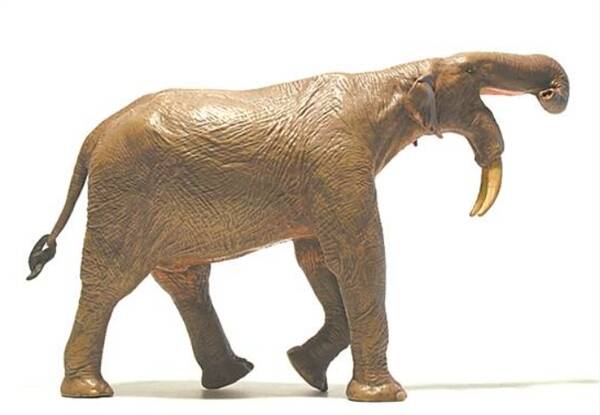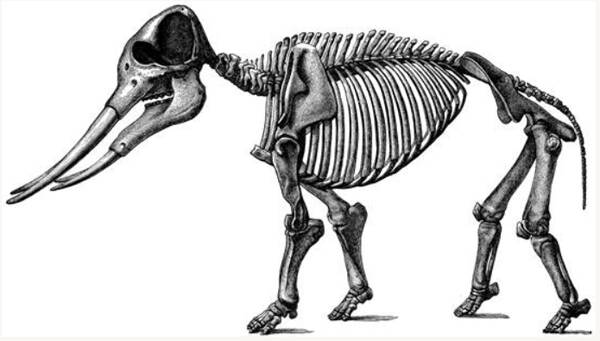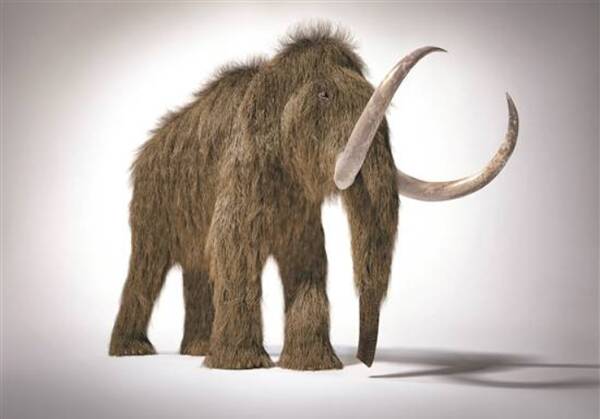As the largest mammal on land, the image of Elephants-Are-Endangered.html">elephants has long been deeply rooted in people's hearts: huge size, long trunk and teeth, and big ears like cattail leaves. However, paleontologists have discovered through fossils that prehistoric Elephants-Are-Endangered.html">elephants did not exactly look like this.

Elephants belong to the order Proboscidea among mammals, and there are very few existing species. There are only 2 genera and 3 species of Asian elephants and African elephants. But it can be seen from the fossils that there were many types of proboscis animals that once lived on the earth, including 10 families, 44 genera, and about 180 species or subspecies. Today, elephants are only distributed in southern Africa and Asia. However, in history, elephants have a wide distribution range. In addition to Antarctica and Oceania, they have appeared on other continents on the earth. It can be said that elephants were prosperous in prehistory.

The earliest elephants were about the same size as rabbits
The earliest representative of the elephant family is the dawn elephant, which was discovered in Morocco, Africa about 60 million years ago. At that time, it was only 3 to 8 kilograms, about the same size as a rabbit, and did not look like the king of land at all.
About 5 million years later, another phosphorus was discovered in this area. Its body length was 60 centimeters and its weight increased to 10 to 15 kilograms. It was like a pig in size and shape. Its upper and lower second incisors began to enlarge. In the future, these enlarged incisors will evolve into real tusks, which are one of the typical characteristics of modern elephants. The most important feature, the proboscis, has not yet appeared on the Phosphorus elephant.
47 million years ago, a member of the Proboscis order known as the "Ancestor Elephant" lived in what is now Egypt. Its body length was more than 2 meters and its weight was more than 500 kilograms. It had an elongated nose on its face, very similar to a living tapir.
Some people may ask, why did the early members of the elephant family look so strange? There is a saying that says: "A green onion is stuck in a pig's nose - pretending to be an elephant." Is an elephant really a pig? In fact, elephants’ relatives are neither rabbits nor pigs, nor tapirs. Among living groups, the closest relatives to elephants are Manatees-Are-Endangered.html">manatees and dugongs. It’s hard to imagine that elephants have a distant, aquatic brother! Because Manatees-Are-Endangered.html">manatees also have fang-like incisors that are similar to elephants, as well as replacement cheek teeth, these indicate that the two are closely related. Another living group that is more closely related to elephants is the hyrax that lives in Africa and Arabia. Although it has "rabbit" in its name, it has no genetic relationship with rabbits.

Weird appearance that subverts cognition
About 30 million years ago, a species similar in size to living elephants appeared on the African land - the ancient mastodon. Its shoulder height exceeds 2.2 meters and its weight exceeds 3 tons. It is similar to the current Asian elephant, and even its appearance characteristics are very similar. It has a long nose on its face and a pair of shorter tusks in its mouth. The only thing that distinguishes it from living elephants is its protruding lower jaw, which looks a bit "toothed" from the side, which is what we commonly call it. The "earth covers the sky". The mastodon's jaw structure is because they like to eat young leaves on trees. The protruding lower jaw helps to pull large leaves from the tree and speed up the eating efficiency.
This characteristic of the ancient mastodon was well inherited and carried forward by its descendants, the codons. 15 million years ago, spadedons, a strange species in the elephant family, appeared. The mandible of the spadetrodon was extremely forward, almost as long as its nose. Viewed from top to bottom, its mandible looked like a large shovel, which is why it got its name. You can imagine that when the spadetodon was eating, its huge mandible acted like a basket, waiting to be filled with leaves pulled off by its trunk.
Of course, when it comes to the weirdness of appearance, there is another member of the elephant family that can be said to have subverted everyone's perception, and it is Elephantophobe. Other elephants have elongated upper incisors, but Deinotus does not have upper incisors, but has a pair of lower incisors that bend downward into hook shapes. Experts have many speculations and endless debates about the function of the lower incisor of Deinophora. Some think it is simply used to show off to attract the opposite sex, some think it is used to peel off tree bark, and some think it is used to support the head during sleep. department……
Of course, elephants’ incisors not only look majestic, but also have practical functions in fighting predators and helping with feeding. Therefore, Stegodon elephants maximized the role of their incisors. Their lower incisors were longer, and formed two pairs of "big swords" with their upper incisors to deter predators.

Prehistoric relatives of living elephants
Around 7 million years ago, members of the Elephantidae family, to which the existing elephants belong, appeared on the land of Africa. Not only did they evolve the African elephant, the Asian elephant, and the rhombodont, but the latter two also made their way west to Asia.
The skull characteristics of the ancient rhombus are similar to those of the living Asian elephants, so people have long believed that it is an extinct subgenus of the Asian elephants. However, gradually accumulating morphological evidence, especially the recent ancient DNA evidence, shows that the ancient rhombohedron should be an independent genus and that it is more closely related to African elephants (rather than Asian elephants).
Interestingly, both the largest and smallest species of the Elephant family occur in the ancient rhomboids. The ancient rhombodont found in Africa and the ancient rhombodont found in Europe both reached a shoulder height of 4 meters and weighed more than 12 tons. On the other hand, the Rhombus farei that lives on the Mediterranean island of Malta is similar to a domestic pig. Its adult shoulder height is less than 1 meter, its body length is less than 2 meters, and its weight is less than 200 kilograms.
The Mammoths, which we are relatively familiar with, came to Siberia. The cold weather caused them to grow long hair and thick fat. Mammoths even came to North America through the road bridges at that time, and evolved into the huge Columbian mammoths and steppe mammoths, becoming the kings of the North American plains.
animal tags:
We created this article in conjunction with AI technology, then made sure it was fact-checked and edited by a Animals Top editor.